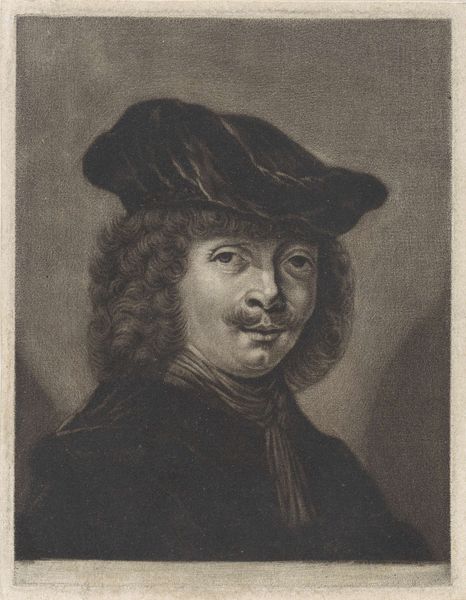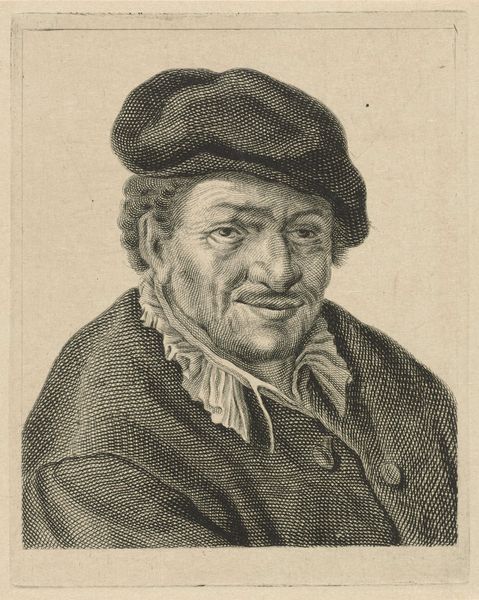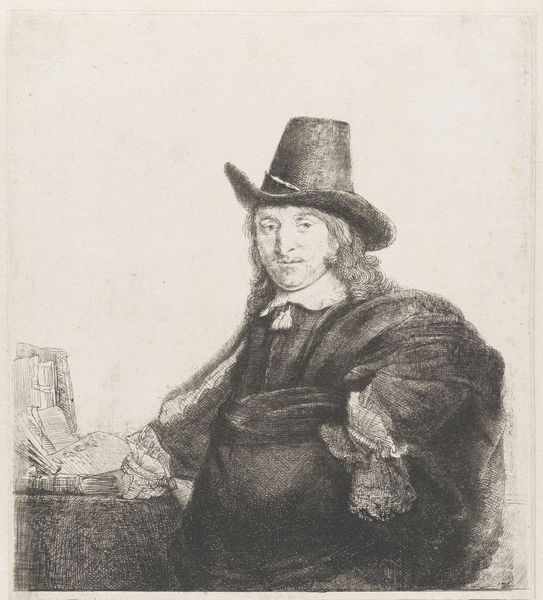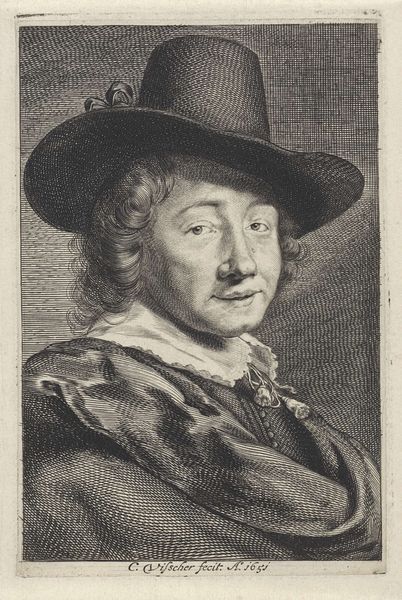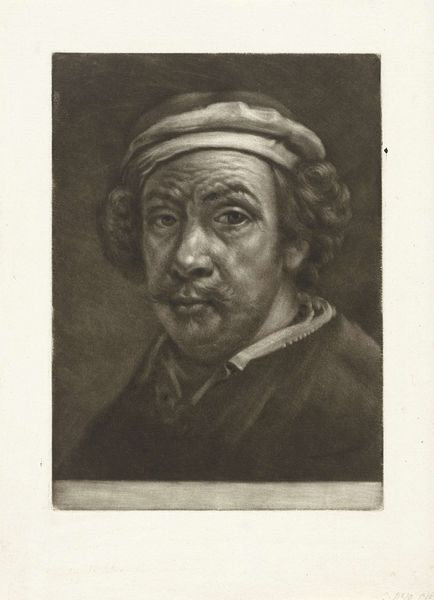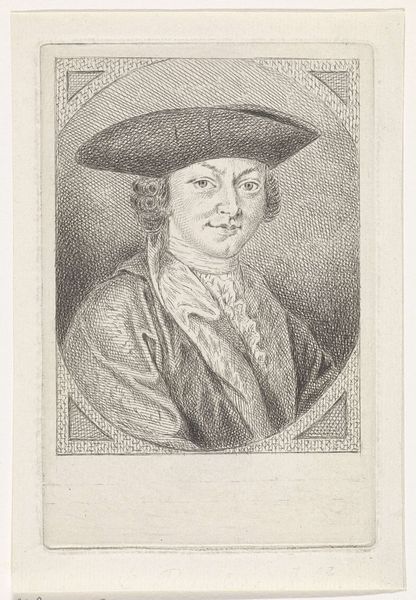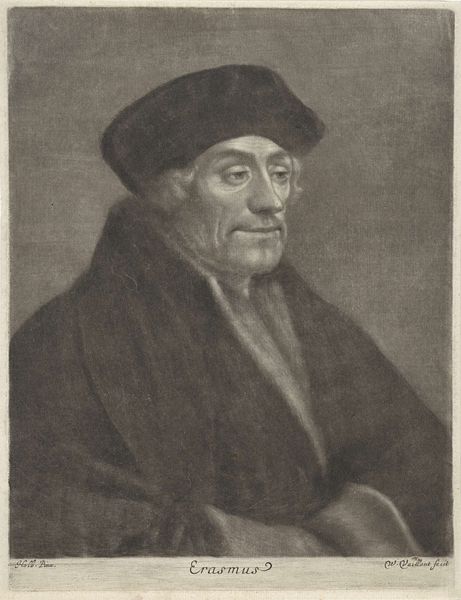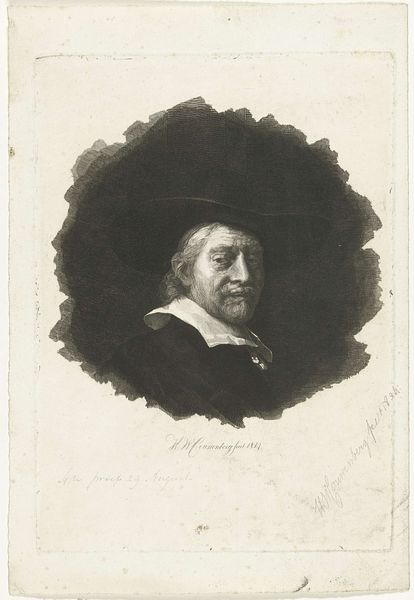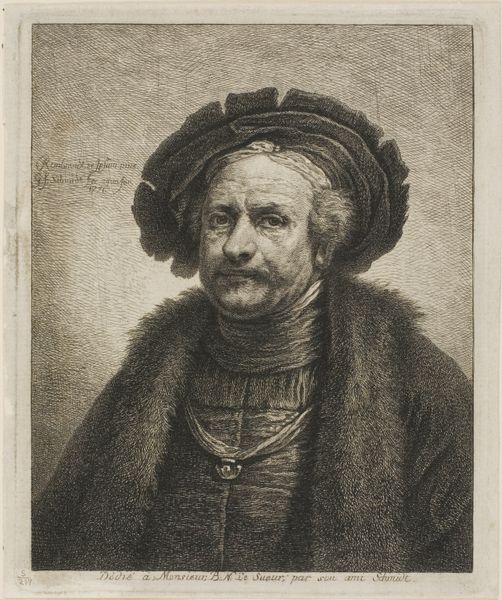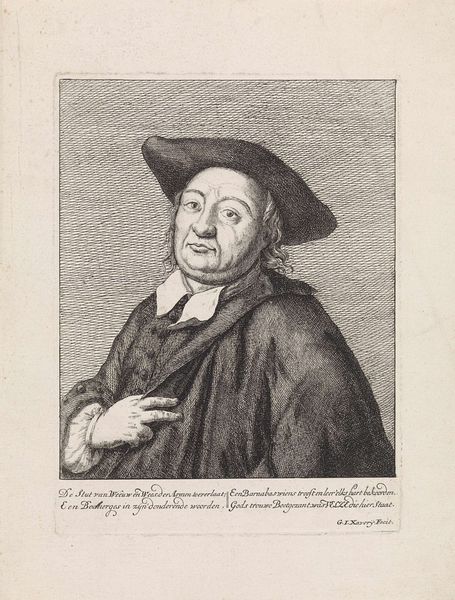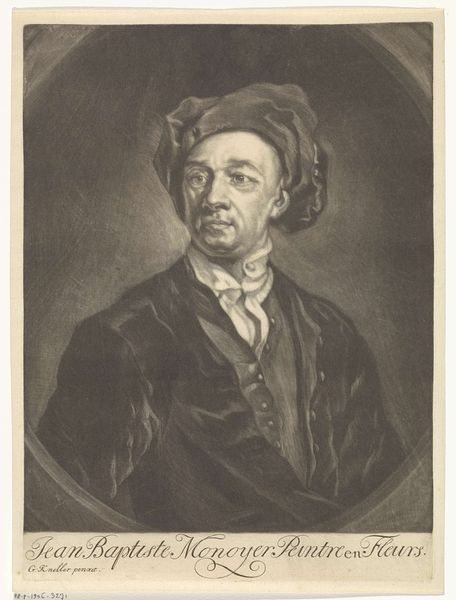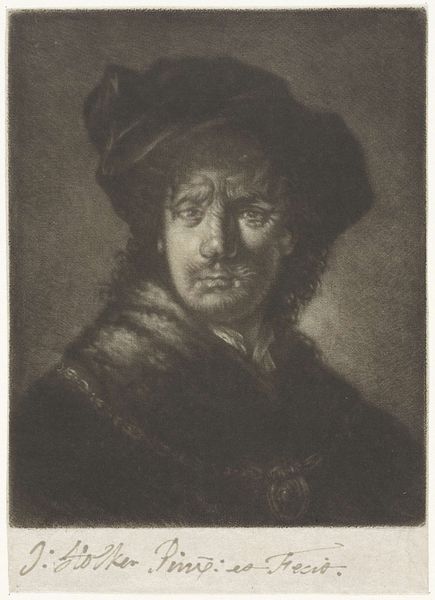
drawing, print, etching, intaglio, ink, engraving
#
portrait
#
drawing
#
self-portrait
#
baroque
#
dutch-golden-age
# print
#
etching
#
intaglio
#
charcoal drawing
#
charcoal art
#
ink
#
pencil drawing
#
portrait drawing
#
engraving
Dimensions: height 322 mm, width 236 mm
Copyright: Rijks Museum: Open Domain
Curator: The etching before us is entitled “Self-Portrait of Rembrandt van Rijn.” This print is attributed to Jacob Gole, likely based on an original self-portrait by Rembrandt, and dates sometime between 1670 and 1724. Editor: It's a striking image. The high contrast immediately grabs you, and there’s an intimate feel to the pose – caught in a moment of creative thought, it seems. I wonder, looking at this dark print, how Gole created these variations? Curator: That contrast, yes. It reflects the broader cultural understanding of the artist at this time. Observe how he is portrayed in the act of creation – quill in hand, seemingly capturing a fleeting thought. It's a testament to the evolving image of the artist as a thinking, feeling individual, moving away from simply a craftsman. And if we look closely, Gole clearly captures that intention. Editor: It’s certainly not a simple reproduction. Think about the labor invested. The artist had to have skill and proper studio. He also has nice garment and hat. Curator: Exactly. And it echoes earlier depictions of scholars or writers. This iconography, of the artist absorbed in thought, contributes to his almost mythical status. It reinforces a link to knowledge and self-reflection that goes far beyond mere technical skill. It reminds us about the enduring legacy of the self portrait. Editor: Right, so there’s this push and pull between the man represented, the labor, but also his accoutrements of class. It makes me wonder if, rather than elevate the status of manual labor through the individual artist, it simply reiterates hierarchy. Curator: That's an excellent point – this ambiguity allows for ongoing interpretations and keeps these symbols relevant across time. It’s certainly a layered visual, and looking closely we are asked to ponder how images carry symbolic meanings across time. Editor: Yes. From the etching tools to the final print, it tells many stories that ask more questions about how artistic practices can perpetuate existing status quos. Curator: Perhaps our exploration today offers a bit more insight into these intriguing layers. Editor: Indeed. Now to ponder about where all that labor and those fancy clothes ended up!
Comments
No comments
Be the first to comment and join the conversation on the ultimate creative platform.
